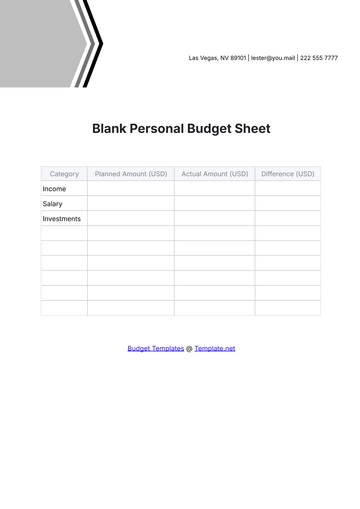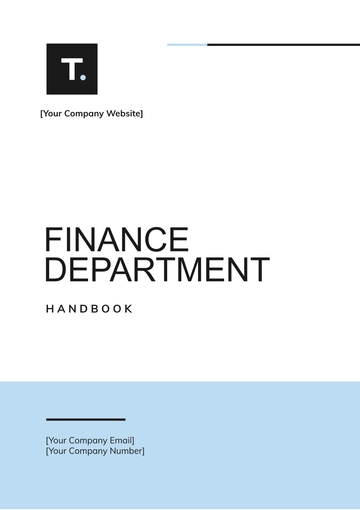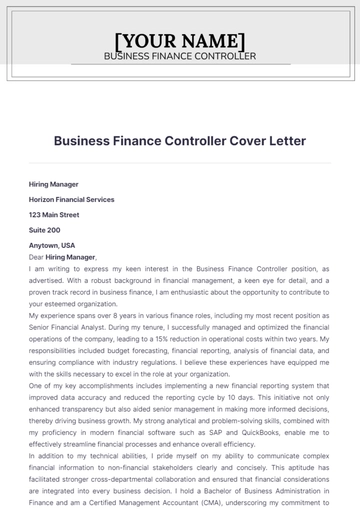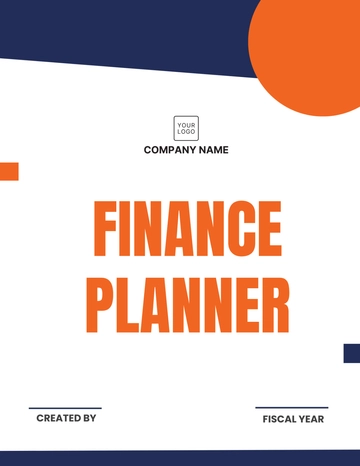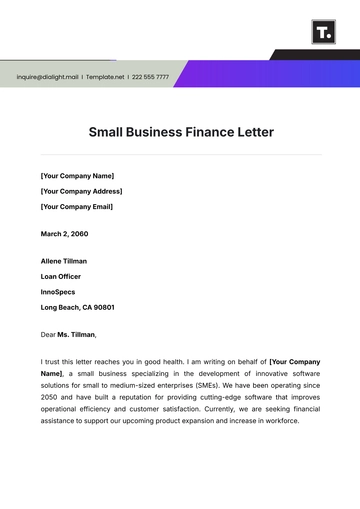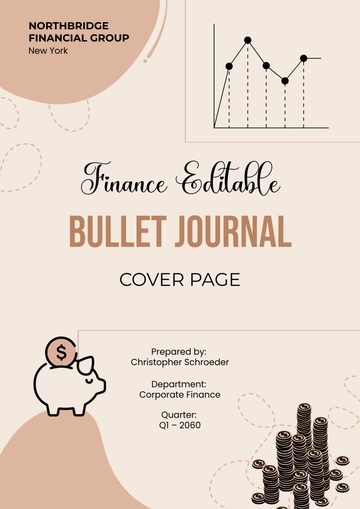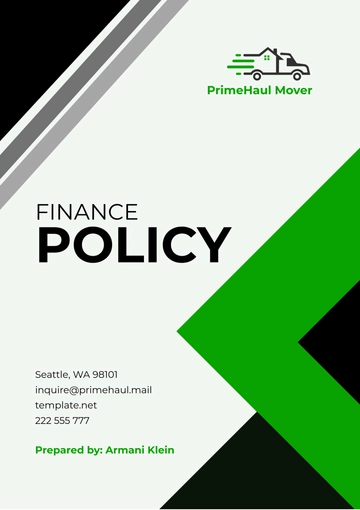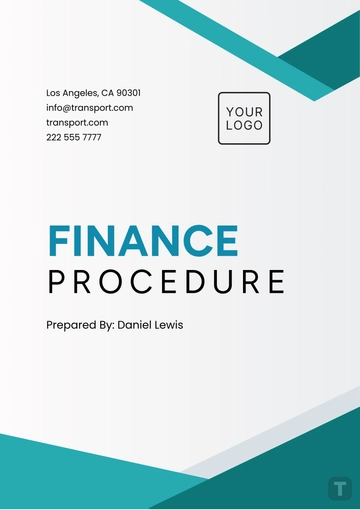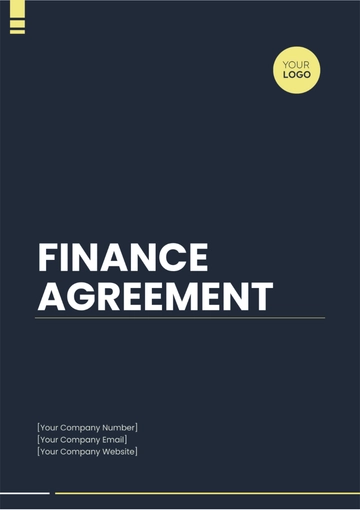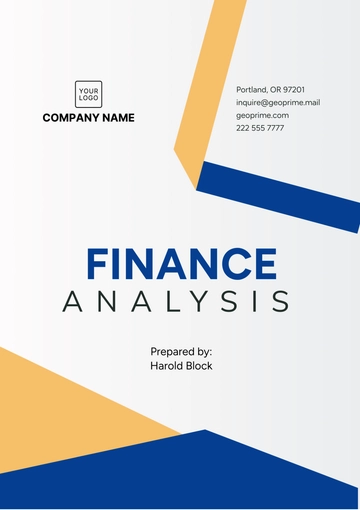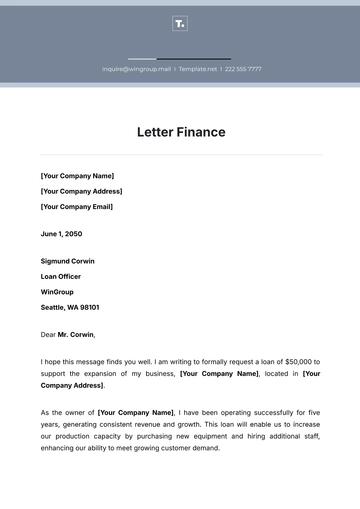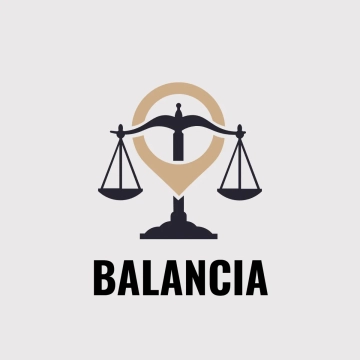Free School Financial Summary
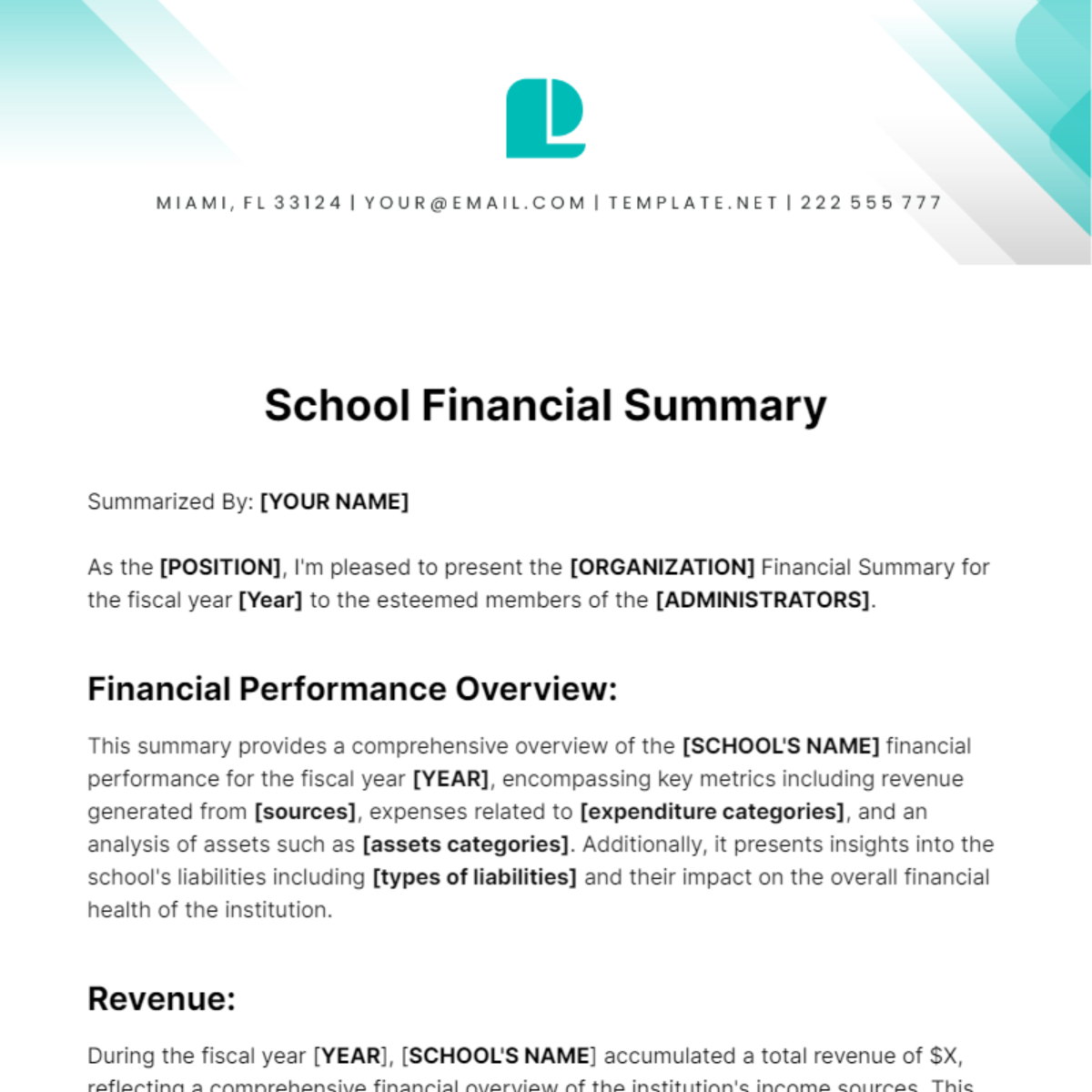
Summarized By: [YOUR NAME]
As the [POSITION], I'm pleased to present the [ORGANIZATION] Financial Summary for the fiscal year [Year] to the esteemed members of the [ADMINISTRATORS].
Financial Performance Overview:
This summary provides a comprehensive overview of the [SCHOOL'S NAME] financial performance for the fiscal year [YEAR], encompassing key metrics including revenue generated from [sources], expenses related to [expenditure categories], and an analysis of assets such as [assets categories]. Additionally, it presents insights into the school's liabilities including [types of liabilities] and their impact on the overall financial health of the institution.
Revenue:
During the fiscal year [YEAR], [SCHOOL'S NAME] accumulated a total revenue of $X, reflecting a comprehensive financial overview of the institution's income sources. This sum encompasses contributions from [SOURCES], such as tuition fees paid by students and their families, government funding allocated for educational purposes, philanthropic donations from [ORGANIZATIONS], and additional revenue from activities like [FACILITY RENTALS]. This diversified revenue stream underscores the school's financial stability and its capacity to support various educational initiatives and infrastructure enhancements.
Expenses:
Operational Expenditures: Throughout the fiscal year [YEAR], [SCHOOL'S NAME] incurred expenses related to [OPERATIONAL EXPENDITURES] such as utilities, administrative costs, and insurance premiums, ensuring the smooth day-to-day functioning of the institution.
Faculty Salaries: A significant portion of the budget was allocated towards [FACULTY SALARIES], reflecting [SCHOOL'S NAME]'s commitment to recruiting and retaining qualified educators to deliver high-quality education.
Facility Maintenance and Educational Resources: Funds were allocated for [FACILITY MAINTENANCE] to cover repairs, renovations, and upkeep of school buildings and grounds, alongside investments in [EDUCATIONAL RESOURCES] including textbooks, technology upgrades, and classroom materials, enhancing the learning environment for students.
Assets:
The school's assets as of the end of the fiscal year [YEAR] are outlined in the table below:
Asset Category | Value ($) |
|---|---|
Cash and Equivalents | $A |
Property and Equipment | $B |
Investments | $C |
Other Assets | $D |
Total Assets | $E |
Liabilities:
The school's liabilities as of the end of the fiscal year [YEAR] are outlined in the table below:
Liability Category | Value ($) |
|---|---|
Accounts Payable | $F |
Loans Payable | $G |
Accrued Expenses | $H |
Other Liabilities | $I |
Total Liabilities | $J |
Financial Highlights:
Revenue Growth: The school experienced a [X%] increase in revenue compared to the previous fiscal year, attributed to factors such as [STUDENT ENROLLMENT], indicating sustained growth and stability in income streams.
Expense Management: Despite facing challenges such as [CHALLENGES], the school effectively managed expenses through careful budgeting, cost-saving measures, and strategic resource allocation, ensuring fiscal responsibility and operational efficiency.
Strong Asset Base: The balance sheet reflects a robust asset base, including [PROPERTY], supporting the school's financial health and long-term sustainability. This enables the school to invest in [ACADEMIC PROGRAMS], enhancing the educational experience for students and staff.
Conclusion:
In conclusion, the School Financial Summary for the fiscal year [YEAR] portrays a positive financial outlook, underscoring the school's commitment to financial stewardship and sustainability. As we move forward, we remain dedicated to prudent financial management practices and strategic decision-making to uphold the school's financial health and support our mission of providing quality education to our [STUDENTS].
- 100% Customizable, free editor
- Access 1 Million+ Templates, photo’s & graphics
- Download or share as a template
- Click and replace photos, graphics, text, backgrounds
- Resize, crop, AI write & more
- Access advanced editor
Discover the Editor School Financial Summary Template on Template.net – a versatile, editable, and customizable tool designed to streamline financial reporting for educational institutions. Crafted with precision and convenience in mind, this template is seamlessly editable in our Ai Editor Tool, ensuring efficiency and accuracy in your financial summaries.
